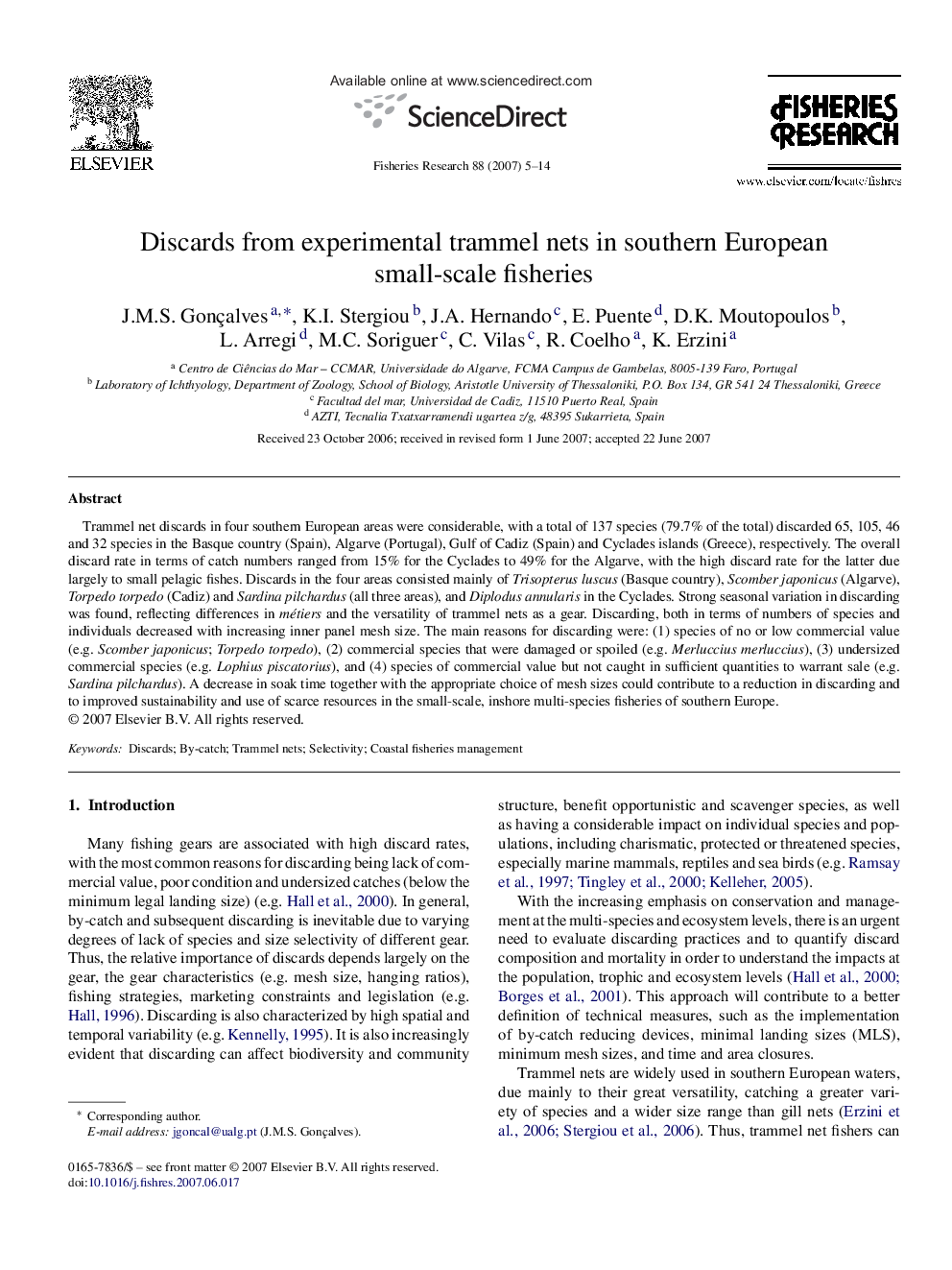| Article ID | Journal | Published Year | Pages | File Type |
|---|---|---|---|---|
| 4544532 | Fisheries Research | 2007 | 10 Pages |
Trammel net discards in four southern European areas were considerable, with a total of 137 species (79.7% of the total) discarded 65, 105, 46 and 32 species in the Basque country (Spain), Algarve (Portugal), Gulf of Cadiz (Spain) and Cyclades islands (Greece), respectively. The overall discard rate in terms of catch numbers ranged from 15% for the Cyclades to 49% for the Algarve, with the high discard rate for the latter due largely to small pelagic fishes. Discards in the four areas consisted mainly of Trisopterus luscus (Basque country), Scomber japonicus (Algarve), Torpedo torpedo (Cadiz) and Sardina pilchardus (all three areas), and Diplodus annularis in the Cyclades. Strong seasonal variation in discarding was found, reflecting differences in métiers and the versatility of trammel nets as a gear. Discarding, both in terms of numbers of species and individuals decreased with increasing inner panel mesh size. The main reasons for discarding were: (1) species of no or low commercial value (e.g. Scomber japonicus; Torpedo torpedo), (2) commercial species that were damaged or spoiled (e.g. Merluccius merluccius), (3) undersized commercial species (e.g. Lophius piscatorius), and (4) species of commercial value but not caught in sufficient quantities to warrant sale (e.g. Sardina pilchardus). A decrease in soak time together with the appropriate choice of mesh sizes could contribute to a reduction in discarding and to improved sustainability and use of scarce resources in the small-scale, inshore multi-species fisheries of southern Europe.
